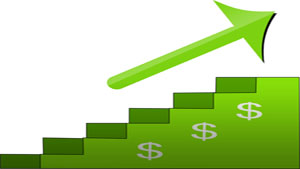 When my father lost his once-lucrative business, I had to start working in order to earn the dollars to buy the things I wanted. It was a novel experience; before I would go to toy stores and merely point to the things I wanted and they magically appeared in my house.
When my father lost his once-lucrative business, I had to start working in order to earn the dollars to buy the things I wanted. It was a novel experience; before I would go to toy stores and merely point to the things I wanted and they magically appeared in my house.
The Max Factor: Your Spending Power
The first thing I learned was that I no longer had as much time as I used to; this was because I was using my time in order to earn money. In effect, I was trading my time for dollars. Next I realized I was trading those dollars for the things I wanted. Sounds simple, right? What I soon realized was that dollars went out of the equation altogether; in effect, I was trading my time for the things I wanted.
 When I was 16 I landed a job with a major corporation in Dallas working in their accounting department; I worked there every summer until I graduated from college. I learned that some people didn’t have to trade a large amount of time to receive the same dollars I was receiving. That correlation usually had to do with a combination of experience, education and talent; the more of these ingredients they possessed, the more they earned for their time.
When I was 16 I landed a job with a major corporation in Dallas working in their accounting department; I worked there every summer until I graduated from college. I learned that some people didn’t have to trade a large amount of time to receive the same dollars I was receiving. That correlation usually had to do with a combination of experience, education and talent; the more of these ingredients they possessed, the more they earned for their time.
I began to refer to this concept as The Maximizable Factor; for short, I affectionately call it The Max Factor. In brief, it’s simply the number of dollars you earn for every hour you work. It doesn’t matter if you work for a salary, a commission, an hourly rate, or even on a project basis, you’re still trading time for dollars.
Money Is Time: Your Earning Power
 That’s when I learned that time wasn’t money; it’s backwards: money is time. Money is simply the physical manifestation of the intangible commodity of time. Money was created for ease in the marketplace; imagine if we had to pay for everything with horses. So we convert our hours to money.
That’s when I learned that time wasn’t money; it’s backwards: money is time. Money is simply the physical manifestation of the intangible commodity of time. Money was created for ease in the marketplace; imagine if we had to pay for everything with horses. So we convert our hours to money.
If we buy something on credit, we are actually buying that item with future time we will trade for dollars; think about that the next time you put your credit card on the table at the restaurant when the bill comes.
So, what is the Difference Between Price & Cost?
 If you take the concept a step further, you can see how much something really costs. Once you know your Max Factor, then you know how long you have to work in order to buy something. The price of an object is the same for everyone; that $4 latte is $4 to everyone who purchases it; however, the cost is the velocity those four dollars roll into your pocket, making the cost different for everyone.
If you take the concept a step further, you can see how much something really costs. Once you know your Max Factor, then you know how long you have to work in order to buy something. The price of an object is the same for everyone; that $4 latte is $4 to everyone who purchases it; however, the cost is the velocity those four dollars roll into your pocket, making the cost different for everyone.
How long did you have to work today to buy the lunch you ate?
